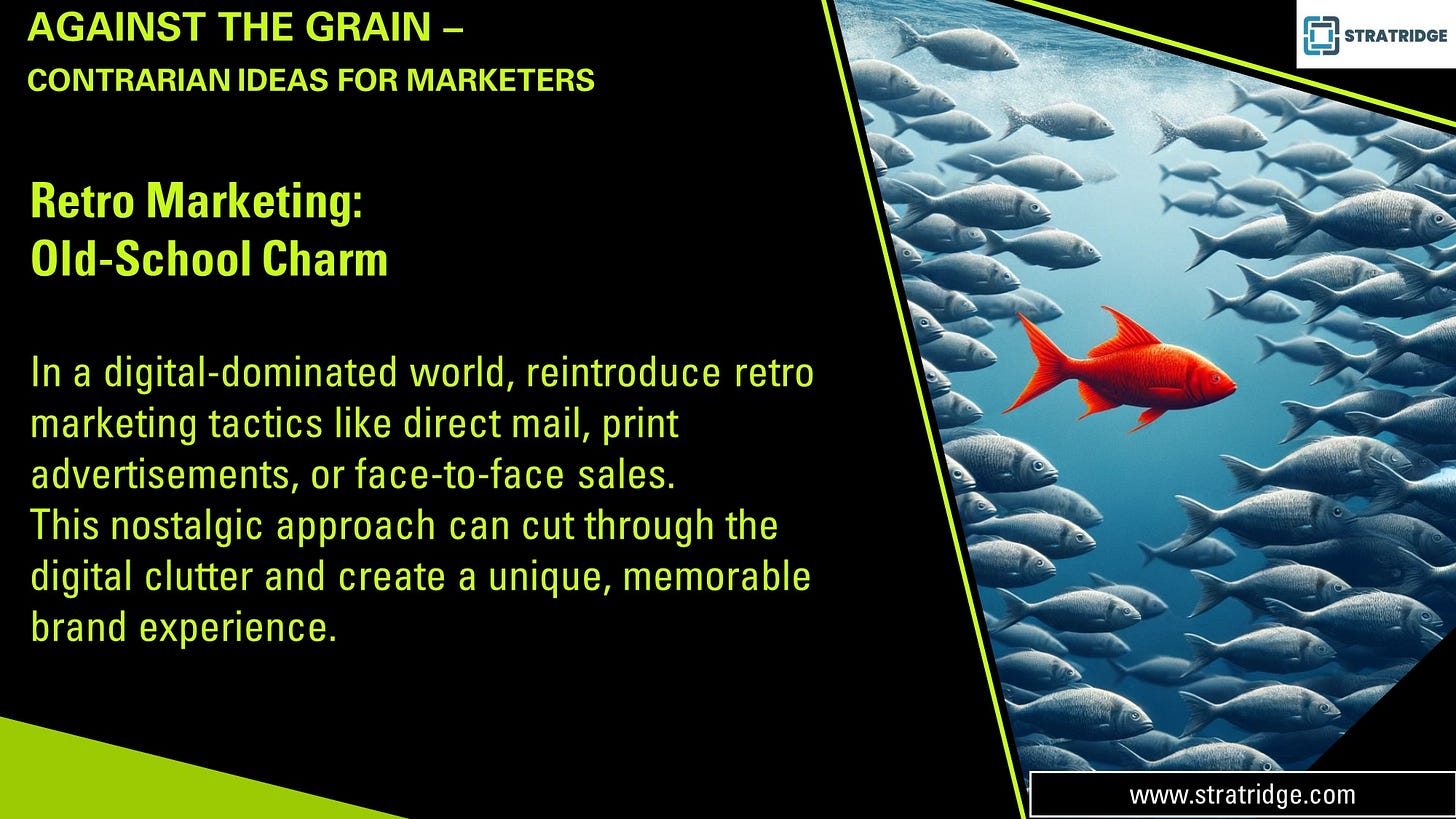In a landscape saturated with digital marketing strategies—from social media ads to email campaigns—the allure of retro marketing tactics can offer a refreshing departure and significant differentiation. Retro marketing leverages the charm of old-school tactics like direct mail, print advertisements, and face-to-face sales. These strategies evoke nostalgia and stand out amidst the digital noise, providing a tactile and personal touch that digital channels often lack. This approach can create a unique, memorable brand experience that appeals to nostalgic older generations and the novelty-seeking younger demographic.
The Appeal of Retro Marketing
Retro marketing taps into the human desire for tangible and authentic experiences. In a world where digital interactions dominate, physical media and face-to-face communications can feel significantly more personal and engaging. Here are several reasons why brands might consider incorporating retro marketing into their strategy:
1. Tangibility and Permanence: Physical materials like letters, flyers, and magazines offer a tangibility that digital content cannot match. They can be held, felt, and kept, providing a lasting brand reminder that consumers can return to time and again.
2. Novelty and Differentiation: As fewer companies invest in traditional marketing channels, those that do can enjoy less competition and greater visibility. For younger audiences, traditional tactics may feel novel and engaging in a sea of digital content.
3. Enhanced Trust and Credibility: Print and direct mail are often perceived as more credible than their digital counterparts. The effort involved in creating physical marketing materials can convey a commitment to quality that enhances consumer trust.
4. Deeper Emotional Connection: Nostalgia is a powerful emotion that can enhance consumer affinity for a brand. Retro marketing can evoke memories and feelings of a simpler time, creating a strong emotional response that might be harder to achieve through digital channels.
Implementing Retro Marketing Strategies
1. Direct Mail Campaigns: Customize direct mail pieces to feel personal and valuable. This could include hand-written notes, beautifully designed catalogs, or special offers. Segmentation and personalization can make direct mail highly relevant and effective at converting recipients.
2. Print Advertisements: Invest in creative and visually appealing print ads in magazines, newspapers, or billboards. These should be eye-catching and thoughtfully placed in publications or locations frequented by your target audience.
3. Face-to-face sales and Events: Organize pop-up shops, attend trade shows, or host events that allow direct interaction with consumers. These interactions can build stronger relationships and offer immediate feedback from customers about your products or services.
4. Collaborative Retro Media Projects: Partner with artists or creators specializing in retro media, such as vinyl records or vintage film photography. These collaborations can result in unique branded content that resonates with niche markets and collectors.
Challenges and Considerations
While retro marketing has many benefits, there are several challenges and considerations to keep in mind:
1. Cost and Scalability: Physical marketing materials and events can be more expensive and less scalable than digital tactics. Effective cost management and ROI tracking are crucial.
2. Environmental Impact: Print materials can have a larger environmental footprint than digital. Using recycled materials and sustainable practices can help mitigate this impact and align with modern consumer values.
3. Integration with Digital Strategies: Retro marketing should not exist in isolation but rather be integrated with digital strategies. QR codes on print ads, social media tie-ins at live events, and digital follow-ups to direct mail are ways to create a cohesive marketing strategy.
Successful Examples of Retro Marketing
1. Vinyl Record Releases: Music artists releasing new albums on vinyl is a perfect example of retro marketing. This appeals to audiophiles and collectors and creates an event-like buzz around an album release.
2. Vintage Packaging: Brands periodically release products in vintage packaging to celebrate anniversaries or capitalize on nostalgia, often resulting in increased sales and media attention.
3. Revival of Classic Advertising Campaigns: Some brands revive classic advertising campaigns with a modern twist, tapping into nostalgia while connecting with newer generations.
Retro marketing presents a unique opportunity for brands to differentiate themselves in a crowded digital market. By blending old-school charm with modern marketing savvy, companies can create memorable campaigns that resonate emotionally with consumers. This not only enhances brand visibility but also deepens consumer engagement and loyalty. Whether through a beautifully crafted direct mail piece, a nostalgic print ad, or a personal face-to-face interaction, retro marketing can offer consumers a welcome break from the digital world and leave a lasting impression.
For more marketing tips, tutorials, templates, and tricks, please subscribe to https://www.stratridge.com


